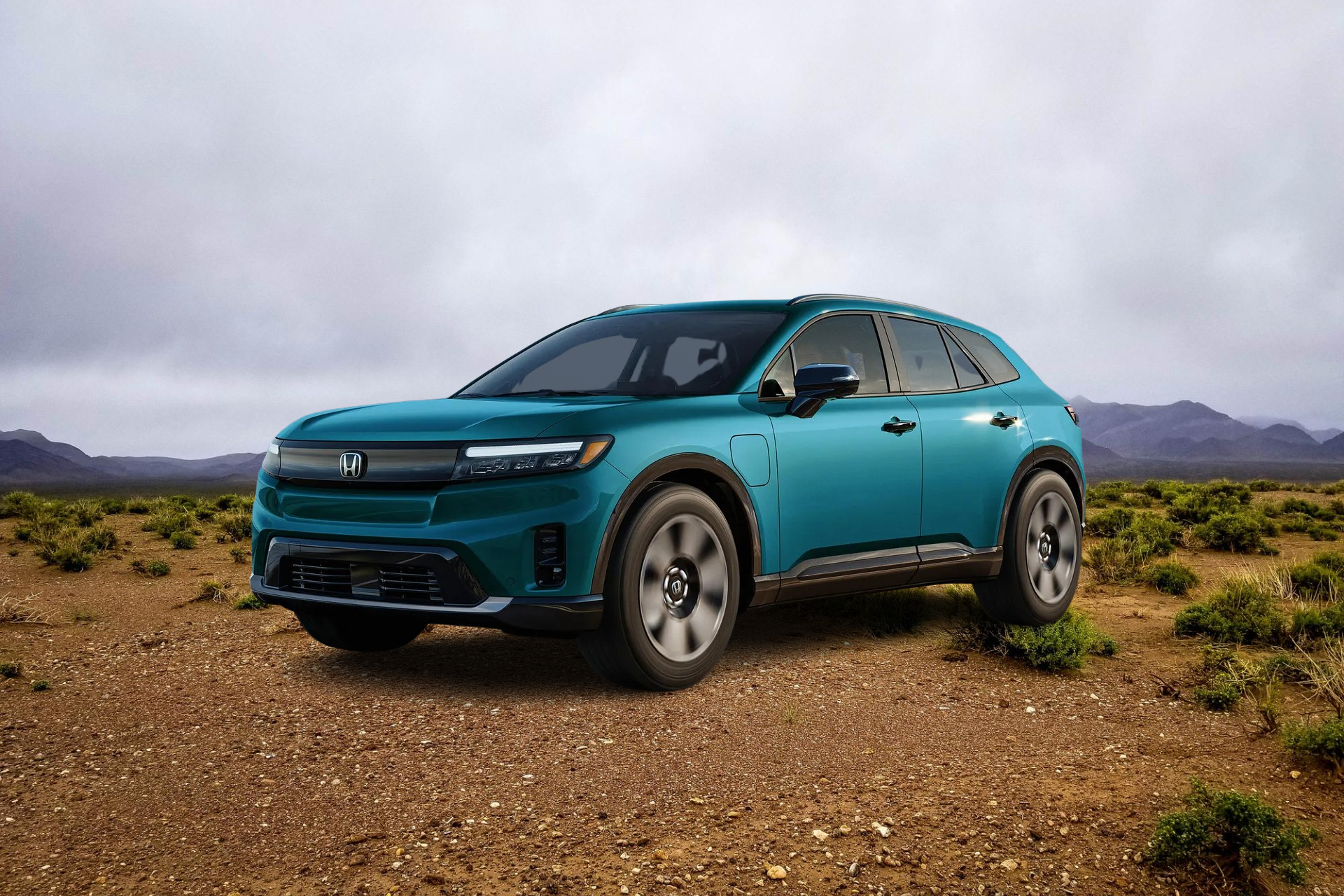Why Do We Need Electric Vehicles?
Jackson also said there is still no strong consumer appetite for electric vehicles, which means that manufacturers that fail to sell the mandatory number of zero-emission vehicles will be required to buy loans, which he believes will drive up the prices of their other models.
However, no matter what happens in the United States, it probably won’t stop the spread of electric vehicles around the world, because electric vehicles not only limit carbon dioxide emissions but can also improve air quality in cities by converting emissions from cars to electricity.
GREENHOUSE GAS EMISSIONS
While charging a battery can increase pollution in power plants, the overall emissions associated with driving electric vehicles are still generally lower than those of gasoline-powered vehicles, especially if electricity is generated from renewable energy sources such as wind. Of course, for electric vehicles to truly have zero emissions, the electricity used to charge the batteries must come from renewable sources like the sun or wind. An electric vehicle has zero exhaust emissions, but still generates a certain amount of greenhouse gas emissions when charged from the mains.
Owning an electric car is one of the best ways to protect the environment because, with it, you can effectively reduce carbon emissions by up to 3 tons per year. In addition to participating in the fight against global warming, here are 30 good reasons why your next car should be an electric car.
The maintenance costs of electric vehicles are much cheaper because electric vehicles have fewer moving parts than gasoline ones. For EVs, lower maintenance and charging costs compared to gasoline prices tend to offset a higher starting price over time.
HEV, PHEV, and EV can significantly reduce fuel costs thanks to the high efficiency of electric drive components. Since PHEVs and electric vehicles are wholly or partly dependent on electricity, their fuel economy is measured differently than conventional vehicles.
Gasoline miles per gallon is a measure of the efficiency of electric vehicles, PHEVs and hydrogen fuel cell vehicles, comparable to a vehicle running on gasoline per gallon. Consider it MPG, yet rather than addressing the miles per gallon of a vehicle’s fuel, it addresses the number of miles a vehicle can travel utilizing a measure of power with a similar energy content as a gallon of gas.
This even takes into account the production of vehicles and the generation of electricity needed to power them. Despite popular belief, when considering the total cost of buying and operating an electric vehicle, they may not be more expensive than traditional gasoline or diesel-powered vehicles. The expense of power needed to charge an electric vehicle is around 40% lower than the expense of utilizing gas for a vehicle of a similar size venturing to every part of the equivalent distance1. Electricity is much cheaper than gasoline; it costs about half as much as gasoline.
ELECTRIC VEHICLES CAN HELP improve fuel economy
Thanks to the hybrid-electric engine and all-electric, we can achieve significant cost and environmental savings. By adding more batteries and charging capacity to gasoline-electric hybrids, we can get plug-in hybrids, offering a variety of hybrids (500 miles or more), and full-electric power for short trips, which is significant Reduce gasoline usage. Hybrid and plug-in electric vehicles can help improve fuel economy, reduce fuel costs, and reduce emissions.
 Electric vehicles, or electric vehicles for short, burn power rather than gas, making them a much cleaner option in contrast to conventional vehicles. Clean electric vehicles (EVs) are fully electric and do not emit exhaust gases; these cars can be powered by electricity or hydrogen. Plug-in hybrid electric vehicles (PHEVs) and all-electric vehicles (EVs), also called battery electric vehicles, can be powered exclusively by electricity generated in the United States from natural gas, coal, nuclear power, and wind. , hydroelectric and solar.
Electric vehicles, or electric vehicles for short, burn power rather than gas, making them a much cleaner option in contrast to conventional vehicles. Clean electric vehicles (EVs) are fully electric and do not emit exhaust gases; these cars can be powered by electricity or hydrogen. Plug-in hybrid electric vehicles (PHEVs) and all-electric vehicles (EVs), also called battery electric vehicles, can be powered exclusively by electricity generated in the United States from natural gas, coal, nuclear power, and wind. , hydroelectric and solar.
Hybrid electric vehicles (HEVs) generally use less fuel than similar conventional cars because they use electric drive technology to improve vehicle efficiency through regenerative braking and capture the energy lost during braking. Electric cars get the energy to drive the wheels from batteries that are powered by electricity, rather than from a mechanical engine that runs on fuel as in more traditional cars. The use of these vehicles helps protect the environment by reducing greenhouse gas emissions and promoting renewable energy sources that are least likely to form a carbon footprint. The exhaust emissions of all-electric vehicles are zero, which means that compared with traditional gasoline-powered vehicles, they produce much fewer greenhouse gases and other harmful emissions.
Cars, trucks, and other vehicles are among the largest producers of air pollution in our country. Emissions from cars and trucks are not only harmful to our planet, but also to our health.
REDUCE EMISSIONS and FUEL COSTS
Air pollutants from gasoline and diesel vehicles cause asthma, bronchitis, cancer, and premature death. Cars and trucks also emit carbon dioxide, one of the greenhouse gases responsible for climate change. Together, road and off-road vehicles account for approximately 44% of total air pollution in Minnesota.
To estimate the greenhouse gas emissions associated with charging and driving a plug-in hybrid or EV where you live, visit our Greenhouse Gas Calculator for Electric Vehicles and PHEVs. By transforming your next car into an electric car, you can help improve air quality and reduce the impact of climate change. Changes in the way we fuel our vehicles have enormous potential to reduce emissions and fuel costs.
By combining Oregon’s energy resources, including an increase in renewable energy sources, a light electric vehicle will have greenhouse gas emissions of just 25-33% of a comparable gas-powered car. And when you take into account the emissions over the entire fuel life cycle, a light electric vehicle will be 68-98% less than a traditional gas-powered vehicle. Indeed, even if we switch from gasoline-powered cars to electric vehicles and hybrids powered by our existing electricity grids (which use mostly fossil fuels), we will see a 42% reduction in CO 2 emissions on average across the country, according to studies. Peter Lilienthal of the National Renewable Energy Laboratory.
Thanks to sound decisions such as not building new fossil fuel infrastructure, EVs’ lifetime emissions will continue to decline in both operation and production, as battery and EV manufacturers and EV drivers use more and more of the electricity they generate. From renewable energy sources. In virtually every state in the United States, electric vehicles produce fewer emissions than average fossil gas vehicles, and as our electrical grid continues to rapidly decarbonize, electric vehicles will become even safer for the environment.
Thanks to decades of Fresh Energy and its partners, Minnesota is making tremendous strides in both generating cleaner electricity with lower greenhouse gas emissions and providing energy to end-use sectors such as transportation with cleaner electricity, as recently demonstrated by Clean Cars’ move. Minnesota. , a long-standing priority of Fresh Energy. By encouraging wider adoption of electric vehicles alongside active modes of transportation such as walking and cycling, and by increasing investment in electrified public transport, Minnesota is making significant strides towards achieving its greenhouse gas emission reduction targets.



